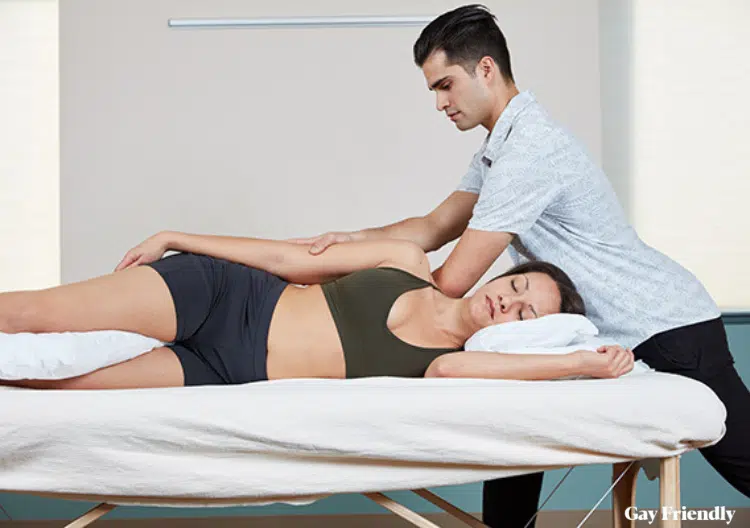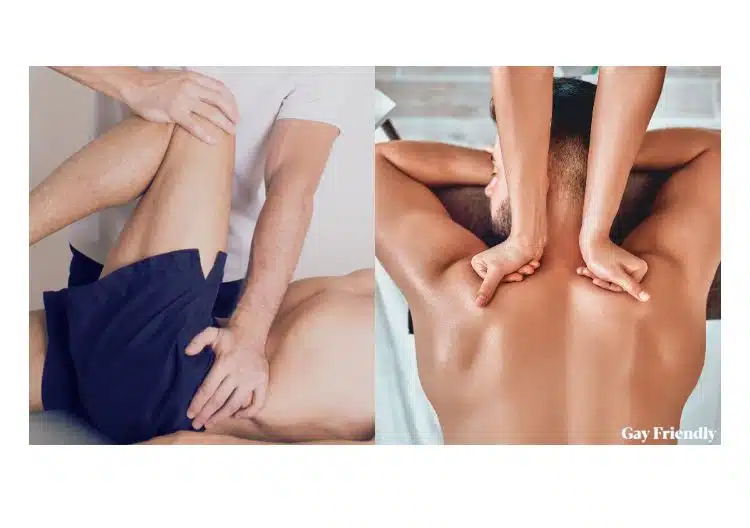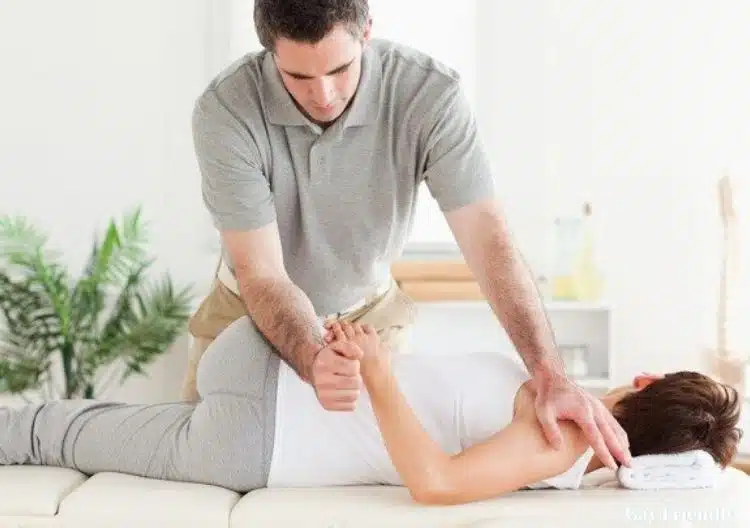Navigating the expansive world of bodywork therapies can be an adventure in itself. Among the myriad options available, two practices often garner attention due to their popularity and unique benefits: Rolfing and Massage. Although they may seem similar at first glance, diving deeper into their methodologies, focal points, and intended outcomes unveils a world of difference between the two.

Rolfing Structural Integration is a comprehensive approach that targets the body’s fascia— the connective tissue enveloping our muscles and organs— with the intention of bringing about whole-body alignment, ease of movement, and lasting relief from discomfort.
Massage, on the other hand, is a more localized therapy primarily focused on muscles, aiming to alleviate tension, stimulate circulation, and induce a state of deep relaxation. The contrasts don’t stop there. While massage therapy typically offers immediate, albeit temporary relief, aspires to create long-term structural changes that may contribute to ongoing improvements in posture, flexibility, and overall well-being.
Rolfing vs. Massage
Although both rolfing and massage therapy falls under the category of bodywork, their methods and objectives are very different. Let’s examine these distinctions in more detail.

1. Focus of Manipulation
Massage Therapy: This is primarily centered around the muscles. Massage therapists use various techniques to relieve muscle tension, stimulate blood circulation, and promote relaxation.
Rolfing: Unlike massage, Rolfing concentrates on the fascia, the connective tissue that surrounds and supports all muscles, bones, organs, and nerves in your body. This approach is based on the belief that by reshaping and reorganizing the fascia, we can improve the body’s alignment, flexibility, and overall health.
2. Scope of Practice
Massage Therapy: Often, massages are localized treatments focused on specific areas of discomfort or tension. For instance, if you have lower back pain, the massage therapist will likely concentrate their efforts there.
Rolfing: On the other hand, adopts a whole-body protocol. It’s not just about addressing specific areas of pain but about working towards overall structural integration. The objective is to elongate and balance fascia across your entire body.
3. Intended Outcomes
Massage Therapy: The effects of a massage typically result in immediate relief from muscle tension and an enhanced state of relaxation. These beneficial effects, while valuable, are usually temporary.
Rolfing: Its aim is more ambitious. It seeks to bring about structural changes in the body that lead to lasting improvements in posture, movement, and comfort levels. By ‘reorganizing’ your tissue, it aspires to hit a reset button on your body, alleviating chronic pain and stress, and creating a renewed sense of ease.
4. Intensity of the Session
Massage Therapy: Depending on the type of massage, it can range from being extremely relaxing (like a Swedish massage) to slightly more pressure-oriented (like a deep tissue massage).
Rolfing: It is often described as more intense or aggressive compared to massage. Manipulating fascia can be challenging and might require a stronger touch. However, any discomfort should only be temporary and subside after the session.
The focus, breadth, targeted objectives, and intensity of the sessions differ greatly between Rolfing and massage therapy, despite certain parallels between them. You may choose the bodywork therapy that best meets your requirements and preferences by being aware of these variances.
Benefits of Rolfing and Massage Therapy
Let’s explore the amazing realm of the health advantages of bodywork, emphasizing the potential advantages of both Rolfing and massage treatment.
Rolfing
People can live more comfortable, active, and balanced lives with the aid of Structural Integration, often known as Rolfing.
1. Improved Posture and Body Alignment
Aims to correct misalignments in the body, promoting better posture and ease of movement.
2. Enhanced Range of Motion
By targeting the fascia—the connective tissue surrounding muscles and organs—It can potentially increase flexibility and range of motion.
3. Reduced Chronic Pain
Many people seek to help manage chronic pain, particularly pain associated with posture or alignment problems.
4. Greater Body Awareness
Each session often includes movement education, which can improve body awareness and contribute to healthier movement habits.
5. Potential Long-Term Relief
Unlike many other therapies, they strive for lasting changes to the body’s structure, offering the prospect of long-term relief from discomfort or tension.
Massage Therapy
A popular and often used kind of bodywork called massage therapy offers a number of advantages in addition to relaxation.
1. Stress Relief
One of the most significant benefits of massage therapy is stress reduction. Regular massages can lower stress hormone levels, leading to improved mood and sleep quality.
2. Improved Circulation
Massage techniques are designed to stimulate blood flow, thereby enhancing circulation and promoting cellular health.
3. Pain Management
From headaches to lower back pain, massage can alleviate discomfort in various parts of the body.
4. Enhanced Flexibility
By reducing muscle tension, massage can improve flexibility and joint mobility.
5. Boosted Immune Function
Studies suggest that regular massages can enhance the body’s immune response by stimulating the production of natural killer cells.
To summarize, both Rolfing and massage therapy are effective bodywork techniques that provide unique but overlapping advantages. Understanding your body’s demands and seeking the appropriate technique is critical.
Recommended:
Tension with Precision
Rolfing Techniques Are Not Used in Massage Therapy
Incorporates various distinct strategies that set it apart from massage therapy. One of the key differences is the emphasis on fascia manipulation. Unlike massage treatment, which focuses on muscular tension, focuses on adjusting and reorganizing the fascia—the connective tissue that surrounds our muscles and organs.
Furthermore, It is a comprehensive method that emphasizes the connectivity of various body regions and works to improve overall alignment and balance.
This integration extends to movement education, in which Rolfing practitioners assist clients in discovering new ways to move in order to improve fluidity, minimize tension, and maximize function.
Another distinguishing feature of Rolfing is its structural integration concept. To promote improved posture and ease of movement, this approach focuses on realigning and balancing the body’s structure within the gravitational field.
Unlike massage treatment, which typically gives instant comfort, Rolfing seeks long-term structural changes that result in improved posture, alignment, and general well-being.
These diverse Rolfing approaches provide a new viewpoint and approach to bodywork treatment, giving individuals more alternatives for their personal needs and goals.
FAQs
Difference between Rolfing and deep tissue massage?
It’s focuses on aligning the body’s connective tissues, while deep tissue massage targets muscle tension.
Purpose of Rolfing?
To realign and balance the body’s structure by manipulating the fascia (connective tissue).
During a Rolfing session?
The practitioner uses hands, elbows, and fingers to apply pressure on the fascia, guiding the body towards better alignment.
Criticism of Rolfing?
Some find it too intense or painful, and its benefits compared to traditional massage are debated.
Is Rolfing considered massage?
Not strictly. While it involves manual manipulation, its primary aim is structural integration, not muscle relaxation.
The Bottom Line
Rolfing and massage each cut their own particular route in the domain of bodywork treatments, improving physical well-being and reducing suffering. While they have certain similarities, such as the use of hands-on techniques and the desire to improve the health of the body, they differ in their emphasis, aims, and general approach.
Rolfing distinguishes itself by emphasizing fascia manipulation, the connective tissue that surrounds and supports our muscles and organs. Rolfing strives to realign and balance the body’s structure via a holistic perspective, providing long-term alterations that treat not only localized ailments but also the body as a whole.
Massage treatment, on the other hand, usually focuses on particular points of tension and seeks to offer instant relief by manipulating the muscles and soft tissues. It provides relaxation, stress reduction, and transient relief from localized discomfort, but Rolfing digs deeper into the world of fascia to enhance posture, flexibility, and general well-being over time.

















